
Welcome to Pixalate’s CTV & Mobile App Manual Reviews According to COPPA, a series containing the detailed factors the Trust & Safety Advisory Board educators used to assess an app’s child-directedness.
The educators manually review thousands of mobile apps available in the Google Play & Apple App Stores as well as connected TV (CTV) apps from the Roku Channel Store and Amazon Fire TV App Store using the COPPA Rule factors shown below & make those results available to the public at ratings.pixalate.com.
This post takes a look at a popular mobile app (1 million+ downloads) from the Google Play and Apple App Stores. Our reviewer discusses how the subjective factors set forth in the COPPA Rule apply to the app and factor into the reviewer's determination as to whether the app is child-directed or general audience (i.e., it is not targeting children).
The teacher will indicate the factors they relied upon in their assessment using the 10 factors shown below that reflect the 10 child-directed factors in the COPPA Rule.


![]() and
and ![]() and
and ![]() and
and ![]()
The gameplay screenshots for My Little Pony: Magic Princess show that the content is visually directed to children based on the colorful pony animated graphics. At the beginning of the game, players are shown a cinematic explanation of the plot of the game. The game's aesthetics, graphics, and presentation capture the essence of the show along with the dialogue being voiced by the same cast as the cartoon. The premise of the game is to rebuild Ponyville, collect coins, and defeat nightmare moon to make it the most magical place while playing engaging mini-games with the ponies. The music and sound effects are those of a composed musical medley. The animation is nostalgic to the animated series with delightful visual components.
![]()
The incentive is to immerse yourself in my little pony universe and use your magic to eliminate the darkness that is spreading.
![]()
The game is rated E for Everyone in the Google Play Store and 4+ in the Apple store. There is an age gate. The app will open to play regardless of the age input. The app has evidence that children use it. A review from the iOS store from January of 2022 states, “ …it’s amazing my sisters literally played it when I was legit like 5 and now I’m 11 and I love playing it.” The age was specified in this player review. Another review posted in the Google Play Store from July of 2021 says,” I used to play this all the time when I was a child.” However, no age was specified.
Privacy:
The developer’s privacy policy states, “children should never disclose their name, address, or phone number, or personal information, without their parents or guardians prior permission."
Screenshots of My Little Pony: Magic Princess
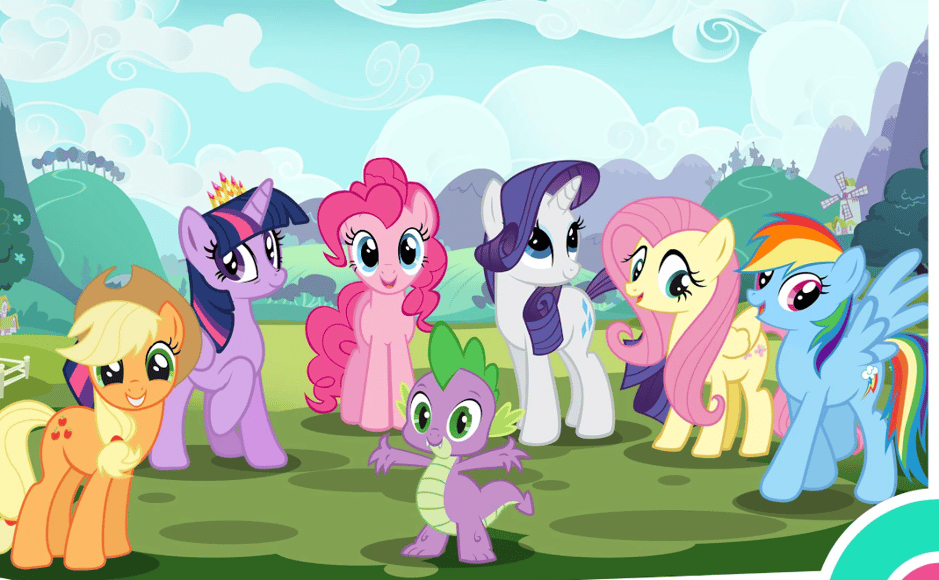
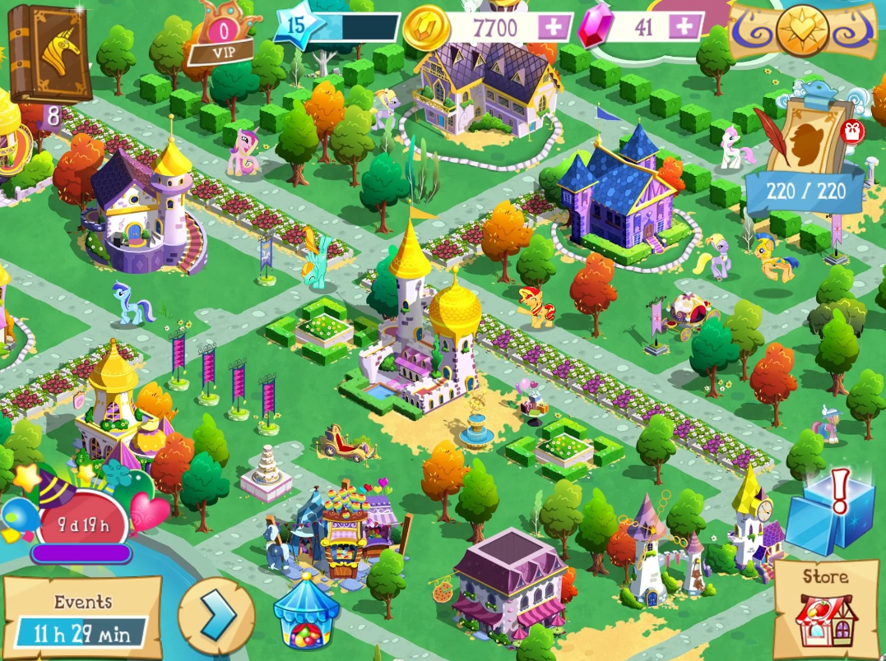
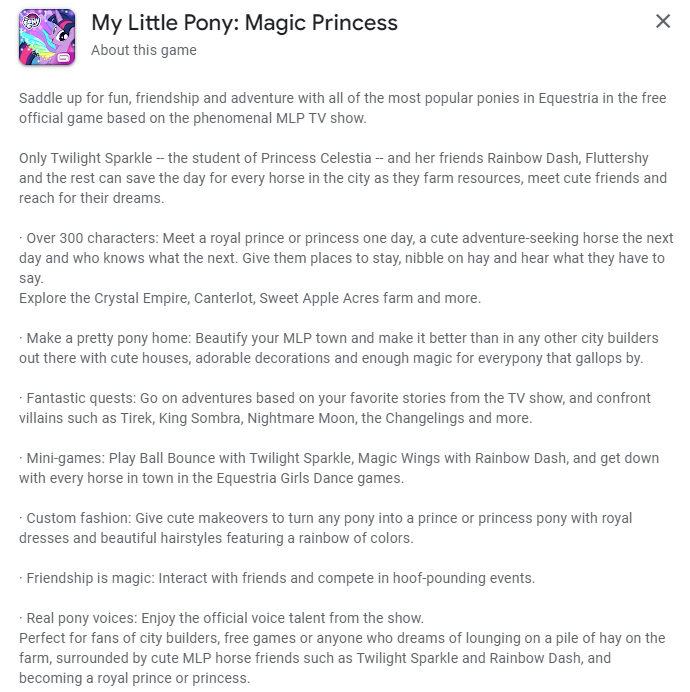
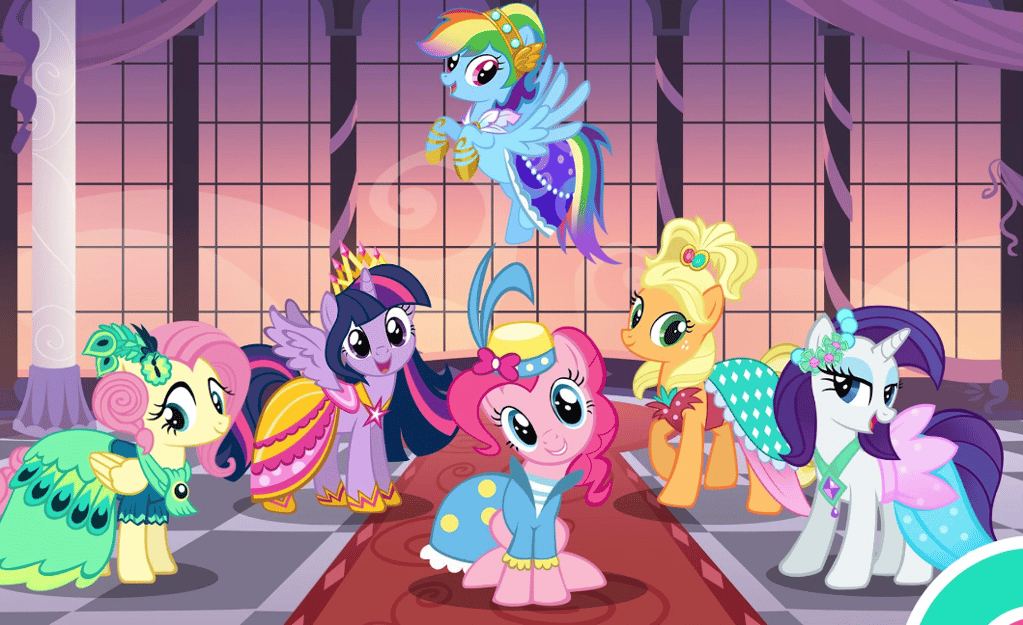
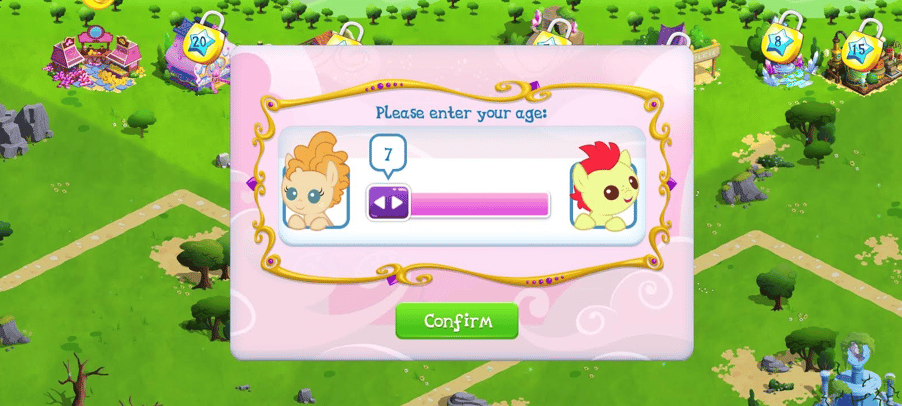
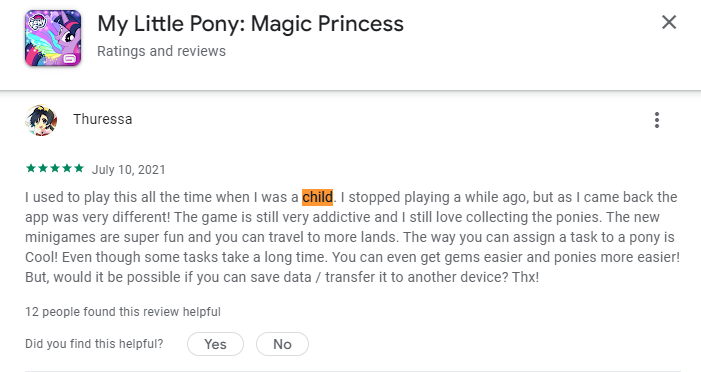
Pixalate’s Trust and Safety Advisory Board was created to bring in individuals with experience using child-directed apps in the classroom to review and assess which apps are child-directed. This manual review process serves to quality check Pixalate’s automated review process. See our full methodology for more information.
Disclaimer
This blog post published by Pixalate is available for informational purposes only and is not considered legal advice. By viewing this blog post, the reader understands and agrees that there is no attorney-client relationship between the reader and the blog publisher. The blog should not be used as a substitute for legal advice from a licensed professional attorney in the applicable jurisdiction(s), and readers are urged to consult their own legal counsel on any specific legal questions concerning any specific situation. The content of this blog post reflects Pixalate's opinions with respect to factors that Pixalate believes may be useful to the digital media industry. Pixalate's opinions are just that, opinions, which means that they are neither facts nor guarantees; and this blog post is not intended to impugn the standing or reputation of any entity, person or app, but instead, to report findings pertaining to mobile and Connected TV (CTV) apps.
*By entering your email address and clicking Subscribe, you are agreeing to our Terms of Use and Privacy Policy.
These Stories on Mobile
*By entering your email address and clicking Subscribe, you are agreeing to our Terms of Use and Privacy Policy.

Disclaimer: The content of this page reflects Pixalate’s opinions with respect to the factors that Pixalate believes can be useful to the digital media industry. Any proprietary data shared is grounded in Pixalate’s proprietary technology and analytics, which Pixalate is continuously evaluating and updating. Any references to outside sources should not be construed as endorsements. Pixalate’s opinions are just that - opinion, not facts or guarantees.
Per the MRC, “'Fraud' is not intended to represent fraud as defined in various laws, statutes and ordinances or as conventionally used in U.S. Court or other legal proceedings, but rather a custom definition strictly for advertising measurement purposes. Also per the MRC, “‘Invalid Traffic’ is defined generally as traffic that does not meet certain ad serving quality or completeness criteria, or otherwise does not represent legitimate ad traffic that should be included in measurement counts. Among the reasons why ad traffic may be deemed invalid is it is a result of non-human traffic (spiders, bots, etc.), or activity designed to produce fraudulent traffic.”

